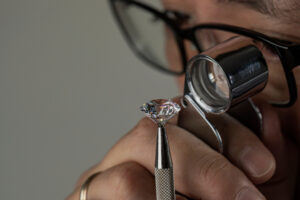
Although people have already been experimenting with diamond-growing technologies for over a century, we were able to perfect the method of creating lab-grown diamonds only recently. We are now able to produce diamonds that are conflict-free and superior to natural diamonds in every way because of technical advancements.
The last few years saw a significant rise in the sales of lab-grown diamond engagement rings. As more and more people become aware of the problems with diamond mining, they switched to lab-grown diamonds.
In this article, we will take a look at some of the interesting facts about lab-grown diamonds.
They Are Known By Many Names
Even though they are commonly called lab-grown diamonds, diamonds created in a lab are also called cultured diamonds, man-made diamonds, lab-created diamonds, etc. They’re also wrongly referred to as “synthetic diamonds” on occasion.
Lab-Grown Diamond Is Same As Mined Diamonds
They are both made entirely of carbon and are similar in every regard. Some people may find it difficult to believe. Irrespective of the manner of origin, they both are chemically, physically, and visually similar.
Lab Diamonds Are Not Synthetic
Synthetic is a term used to describe a material or chemical that is made to look like a natural product. Moissanite and cubic zirconium (CZ) are examples of synthetic diamonds; these materials are designed to look like diamonds but lack carbon content. Lab-grown diamonds are made entirely of crystalline carbon and are identical to those found in nature, indicating that they are actual diamonds rather than synthetics.
Lab Diamonds Are Cheaper

Diamonds mined from the earth are expensive, though not for the reasons you may expect. Many natural diamond merchants continue to propagate the myth that their high prices are due to scarcity. The truth is that there are plenty of diamonds on the planet, and the costly process of mining, processing, transportation, and trading adds to the ultimate price tag. Growing diamonds saves a lot of money and can cost up to 40% less than natural diamonds, despite the fact that they are similar.
They Are Eco-Friendly
When you choose a lab-grown diamond over a natural diamond, you are decreasing the negative effects of mining on the environment and local communities. Diamond mining is a highly polluting and wasteful industry that leaves communities shattered after it ceases to operate.
They Are Free of Conflict
Unlike the natural diamond industry, which is always evolving in unscrupulous strategies to keep blood diamonds in trade, lab-created diamonds cannot be disputed as to their origin.
